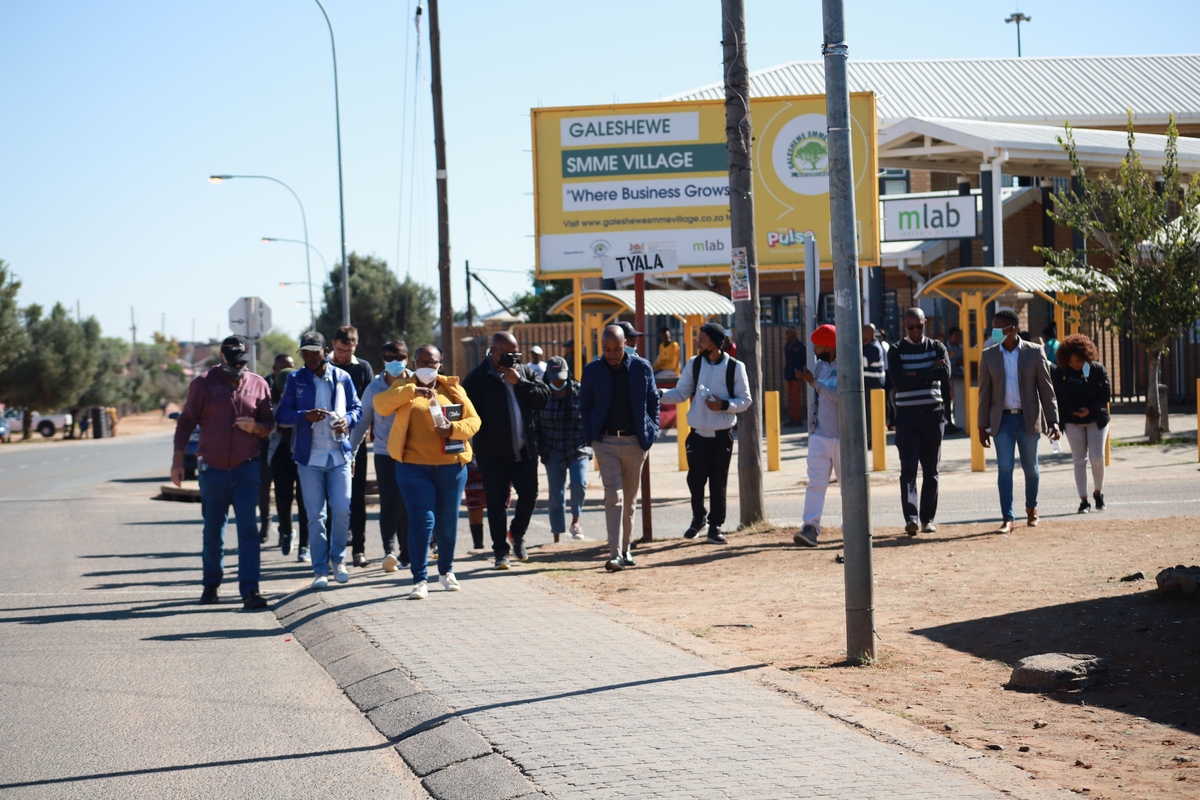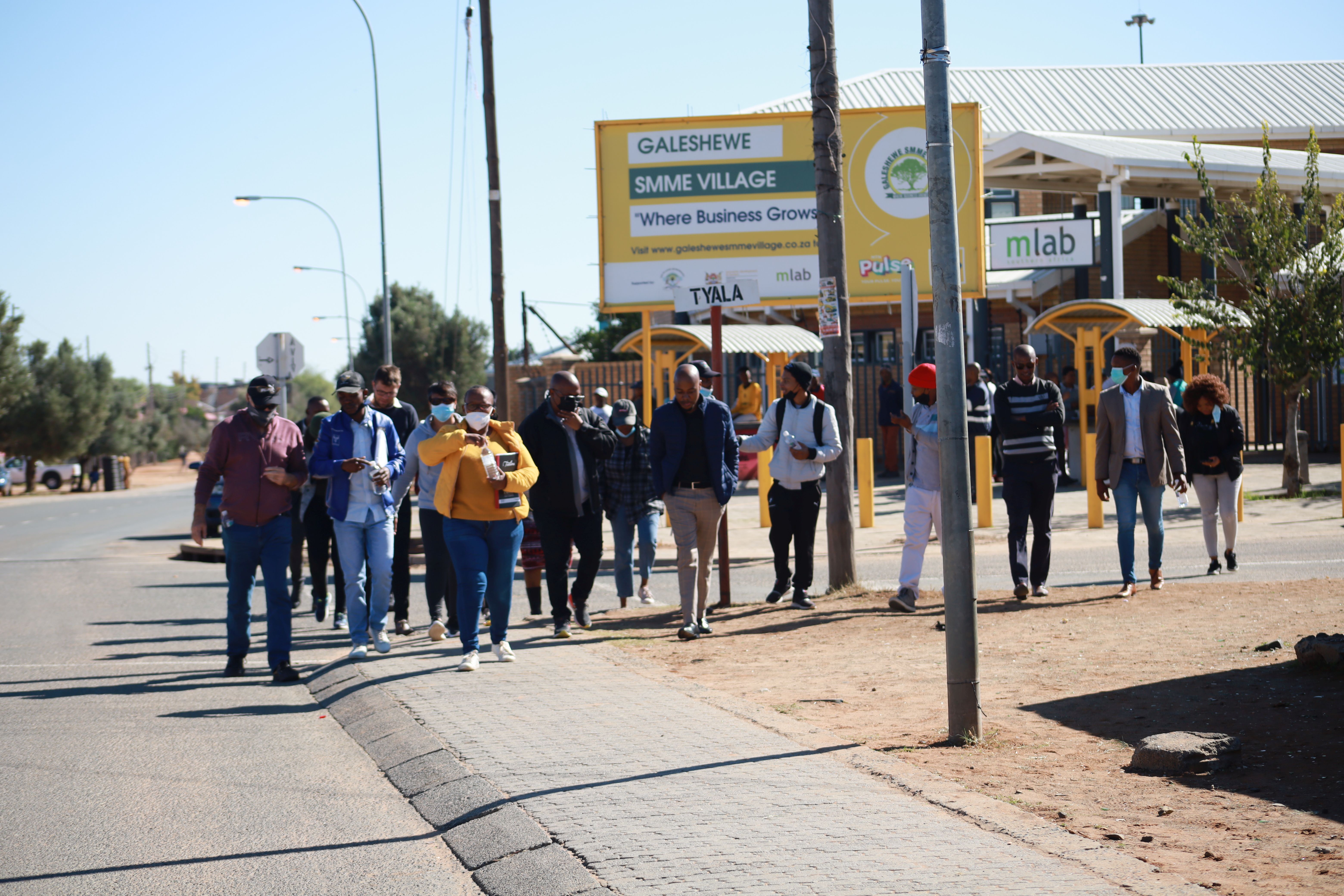This article was first published on URBANET
Galeshewe – the oldest township in Kimberley, South Africa – is part of the Sol Plaatje Municipality in the Northern Cape Province. Located on a lively activity route aimed at fostering social and economic activities between the central business district and the township, the area is also a hotspot for criminal acts. This is now to change. Within the Inclusive Violence and Crime Prevention Programme (VCP), GIZ has commissioned the non-profit organisation Violence Prevention through Urban Upgrading (VPUU) to redesign the open-air arena in Galeshewe. This is part of the ideas competition Cities CHALLENGE 2.0.
Involving the Neighbourhood
As part of the process, an Urban Living Lab is being developed in Galeshewe. In the Lab, VPUU organises workshops and intensively involves local communities in preparation for the construction. The aim is to combat social challenges such as gender-based violence against women, drug abuse, and unemployment. The project is also part of the SPRINT programme (Safer Places: Resilient Institutions and Neighbourhoods Together) initiated by GIZ-VCP and is put into practice in cooperation with the municipality of Sol Plaatje to develop and implement sustainable place-based violence prevention interventions.
In Galeshewe, the initiative faced several challenges: Originally, it was planned to build the hub at Hulana Park, across from an active community hall. In a co-design process, many additional local actors were engaged in its transformation. Within the process, it became clear that a more locally adapted contribution to the area was needed. Hence, it was necessary to explore other locations as well.

Exploring New Locations
Just a few hundred meters down the Hulana activity road, an open-air arena was identified as a suitable site. Here, existing stakeholders are making their own contributions, ensuring that the Urban Living Lab will be sustainably maintained and continued. Among them is the SMME (Small, Medium and Micro Enterprise) Village: a business incubator that supports innovative small businesses and, in the future, also the informal traders in the hub.
The initiative closely cooperates with the Parks and Recreation Department of the municipality, which has pledged an additional budget for the further beautification of the development site. 'We are quite a good team and we are very motivated to work forward with our national partners that allow us to use some of the funds for integrated urban development for this project,' says Moss Mathebula, a municipal official at the Local Economic Development Department of Sol Plaatje.
Local Galeshewe Youth Network, a youth development organisation, assists with local stakeholder management and networking. People with little income are addressed to take part in an urban gardening project at the nearby community hall. When construction is finished, the Parks and Recreation Department as well as SMME will help maintain the area and further improve the Urban Living Lab in the next years.
The Informal Traders Hub: A Green and Safe Place
At the Informal Traders Hub, female street traders from the region will soon be able to have a safe public space, where they will be able to contribute to the livelihood of themselves and their families. The Informal Traders Hub will be built with special attention to the gender-specific needs of female traders, providing them with important infrastructure such as electricity connections, water and sanitation facilities, storage facilities, and WiFi hotspots. The infrastructure on-site can be used by a janitor or by traders and community members as a meeting room.
'The Informal Traders Hub does not only support female entrepreneurship but also contributes to the safety of the whole area. It is very beneficial for our community to place the hub within the activity route at the Hulana area where many young people are going in and out every day, making sure that the area is safe day and night,' remarks Moss Mathebula.
Also, climate change adaptation is considered, as to improve the area and its surroundings’ liveability. To counteract the urban heat island effect, various cooling mechanisms are used, such as less reflective surfaces and the use of earth clay bricks. The green spaces are embellished with native plants that can store water for a longer period.
Old Containers with a New Look
The Informal Traders Hub is set up from recycled shipping and truck containers, referred to as the Active Box: a small multifunctional community building that offers a variety of services and provides surveillance by a janitor and a local Neighbourhood Watch Group to improve safety. For the connecting walls between the containers, builders have used the traditional technique of clay construction. Clay walls keep the rooms cool in summer and warm in winter. Unlike cement, clay is not burned but merely dried and therefore has a primary energy requirement that is 85 per cent lower than cement.
The clay brick construction work was mainly carried out by young people from Galeshewe who were taught the local and sustainable techniques in several workshops. This also helps young people to use and spread their newly acquired skills to improve their employment opportunities.
Currently, the municipality is selecting female traders who will soon be able to use the completed premises of the Traders Hub for their daily business.
The hub really is a good start-up for those businesses. Our goal is that they will continue moving forward even after the project is finished.
Moss Mathebul
The Cities CHALLENGE 2.0 is an initiative led by the Deutsche Gesellschaft für Internationale Zusammenarbeit GmbH (GIZ), in partnership with Cities Alliance and UN-Habitat. It aims at piloting innovative solutions for sustainable planning and building and contributing to the creation of climate-adapted, connected, and liveable neighbourhoods.





